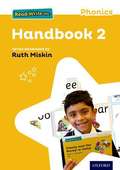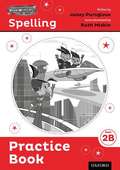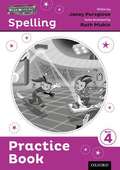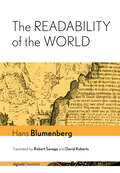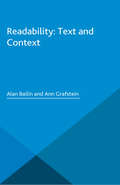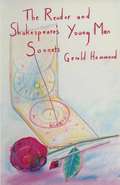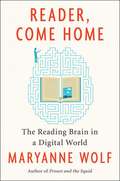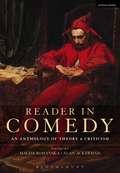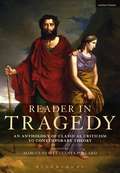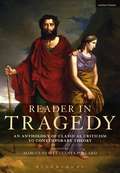- Table View
- List View
Read Write Inc. Phonics: Teaching Handbook 2 (Read Write Inc Ser.)
by Ruth MiskinThis Handbook contains detailed teaching notes for teaching Speed Sounds Sets 2 and 3, and for reading and writing lessons for the Yellow to Grey Storybooks, Non-fiction books and Get Writing! books. Guidance on assessment and timetabling is also included for easy implementation.
Read Write Inc.: Set 1. Speed Sound Cards
by Gill MuntonThis pack contains one card for each sound in Read Write Inc. Phonics Speed Sounds Set 1. Children are taught the three Speed Sounds sets systematically in lively, fast paced lessons, with a phrase and a picture to help children to read each of the sounds. These cards are intended for teachers to use in class. For parents/carers, Phonics Flashcards are available with full instructions.
Read Write Inc. Spelling: Practice Book 2B (PDF)
by Ruth Miskin Janey Pursglove Jenny Roberts Kate SheppardRead Write Inc. Spelling has been developed by Ruth Miskin for the new curriculum to ensure each child is prepared for the spelling component of the Year 6 Grammar, Punctuation and Spelling Test. It comprises engaging online resources; Practice Books with a range of activities; Log Books to track progress; and a comprehensive Teaching Handbook.
Read Write Inc. Spelling: Practice Book 4 (PDF)
by Ruth Miskin Janey Pursglove Jenny Roberts Kate SheppardRead Write Inc. Spelling has been developed by Ruth Miskin for the new curriculum to ensure each child is prepared for the spelling component of the Year 6 Grammar, Punctuation and Spelling Test. It comprises engaging online resources; Practice Books with a range of activities; Log Books to track progress; and a comprehensive Teaching Handbook.
Read Write Inc. Spelling: Teaching Handbook
by Janey Pursglove Jenny RobertsRead Write Inc. Spelling has been developed by Ruth Miskin for the new curriculum to ensure each child is prepared for the spelling component of the Year 6 Grammar, Punctuation and Spelling Test. It comprises engaging online resources; Practice Books with a range of activities; Log Books to track progress; and a comprehensive Teaching Handbook.
The Readability of the World (signale|TRANSFER: German Thought in Translation)
by Hans BlumenbergThe Readability of the World represents Hans Blumenberg's first extended demonstration of the metaphorological method he pioneered in Paradigms for a Metaphorology. For Blumenberg, metaphors are symptomatic of patterns of thought and feeling that escape conceptual formulation but are nonetheless indispensable, because they allow humans to orient themselves in an otherwise overwhelming world. The Readability of the World applies this method to the idea that the world presents itself as a book. The metaphor of the book of nature has been central to Western interpretations of reality, and Blumenberg traces the evolution of this metaphor from ancient Greek cosmology to the model of the genetic code to access the different expectations of reality that it articulates, reflects, and projects.Writing with equal authority on literature and science, theology and philosophy, ancient metaphysics and twentieth-century biochemistry, Blumenberg advances rich and original interpretations of the thinking of a range of canonical figures, including Berkeley, Vico, Goethe, Spinoza, Leibniz, Bacon, Flaubert, and Freud. Through his interdisciplinary, anthropologically sharpened gaze, Blumenberg uncovers a wealth of new insights into the continuities and discontinuities across human history of the longing to contain all of nature, history, and reality in a book, from the Bible, the Talmud, and the Qur'an to Diderot's Encyclopedia and Humboldt's Cosmos to the ACGT of the DNA code.
Readability: Text and Context
by Alan Bailin Ann GrafsteinThis book explores what makes a book readable by bringing together the relevant literature and theories, and situating them within a unified account. It provides a single resource that offers a principled discussion of the issues and their applications.
The Readable People of George Meredith
by Judith WiltMeredith's reputation as an "unreadable" novelist prompted Judith Wilt to examine the relationship between author and reader in Meredith's fiction—a relationship that was combative and teacherly and, she contends, a central aspect of his art. Meredith was concerned with "readable people," by whom he meant his readers (as he imagined them and as they were), his characters (as he created them and as they were perceived), and himself. Focusing on Meredith's struggle to shape and change the reader, Judith Wilt examines five novels: The Ordeal of Richard Feverel, Sandra Belloni, The Egoist, One of Our Conquerors, and The Amazing Marriage. Her analysis develops a theory of Meredith's artistic processes and relates his concerns to those of recent fiction.Originally published in 1975.The Princeton Legacy Library uses the latest print-on-demand technology to again make available previously out-of-print books from the distinguished backlist of Princeton University Press. These editions preserve the original texts of these important books while presenting them in durable paperback and hardcover editions. The goal of the Princeton Legacy Library is to vastly increase access to the rich scholarly heritage found in the thousands of books published by Princeton University Press since its founding in 1905.
Reader, Come Home: The Reading Brain In A Digital World (PDF)
by Maryanne WolfA decade ago, Maryanne Wolf's Proust and the Squid revealed what we know about how the brain learns to read and how reading changes the way we think and feel. Since then, the ways we process written language have changed dramatically with many concerned about both their own changes and that of children. New research on the reading brain chronicles these changes in the brains of children and adults as they learn to read while immersed in a digitally dominated medium.
Reader, I Married Him: A Study of the Women Characters of Jane Austen, Charlotte Brontë, Elizabeth Gaskell and George Eliot
by Patricia BeerThe Reader in al-Jahiz: The Epistolary Rhetoric of an Arabic Prose Master (Edinburgh Studies in Classical Arabic Literature)
by Thomas HefterThe 9th-century essayist, theologian and encyclopaedist ‘Amr b. Ba?r al-Ja?i? has long been acknowledged as a master of early Arabic prose writing. Many of his most engaging writings were clearly intended for a broad readership but were presented as presented as letters to individuals. Despite the importance and quantity of these letters, surprisingly little academic notice has been paid to them. Now, Thomas Hefter takes a new approach in interpreting some of al-Ja?i?’s ‘epistolary monographs’. By focussing on the varying ways in which he wrote to the addressee, Hefter shows how al-Ja?i? shaped his conversations on the page in order to guide (or manipulate) his actual readers and encourage them to engage with his complex materials.
Reader in Comedy: An Anthology of Theory and Criticism
by Magda Romanska Alan AckermanThis unique anthology presents a selection of over seventy of the most important historical essays on comedy, ranging from antiquity to the present, divided into historical periods and arranged chronologically. Across its span it traces the development of comic theory, highlighting the relationships between comedy, politics, economics, philosophy, religion, and other arts and genres. Students of literature and theatre will find this collection an invaluable and accessible guide to writing from Plato and Aristotle through to the twenty-first century, in which special attention has been paid to writings since the start of the twentieth century.Reader in Comedy is arranged in five sections, each featuring an introduction providing concise and informed historical and theoretical frameworks for the texts from the period:* Antiquity and the Middle Ages* The Renaissance* Restoration to Romanticism* The Industrial Age* The Twentieth and Early Twenty-First CenturiesAmong the many authors included are: Plato, Aristotle, Horace, Donatus, Dante Alighieri, Erasmus, Trissino, Sir Thomas Elyot, Thomas Wilson, Sir Philip Sidney, Ben Jonson, Battista Guarini, Molière, William Congreve, John Dryden, Henry Fielding, Samuel Johnson, Oliver Goldsmith, Jean Paul Richter, William Hazlitt, Charles Lamb, Søren Kierkegaard, Charles Baudelaire, Bernard Shaw, Mark Twain, Henri Bergson, Constance Rourke, Northrop Frye, Jacques Derrida, Mikhail Bakhtin, Georges Bataille, Simon Critchley and Michael North.As the selection demonstrates, from Plato and Aristotle to Henri Bergson and Sigmund Freud, comedy has attracted the attention of serious thinkers. Bringing together diverse theories of comedy from across the ages, the Reader reveals that, far from being peripheral, comedy speaks to the most pragmatic aspects of human life.
Reader in Comedy: An Anthology of Theory and Criticism
by Magda Romanska Alan AckermanThis unique anthology presents a selection of over seventy of the most important historical essays on comedy, ranging from antiquity to the present, divided into historical periods and arranged chronologically. Across its span it traces the development of comic theory, highlighting the relationships between comedy, politics, economics, philosophy, religion, and other arts and genres. Students of literature and theatre will find this collection an invaluable and accessible guide to writing from Plato and Aristotle through to the twenty-first century, in which special attention has been paid to writings since the start of the twentieth century.Reader in Comedy is arranged in five sections, each featuring an introduction providing concise and informed historical and theoretical frameworks for the texts from the period:* Antiquity and the Middle Ages* The Renaissance* Restoration to Romanticism* The Industrial Age* The Twentieth and Early Twenty-First CenturiesAmong the many authors included are: Plato, Aristotle, Horace, Donatus, Dante Alighieri, Erasmus, Trissino, Sir Thomas Elyot, Thomas Wilson, Sir Philip Sidney, Ben Jonson, Battista Guarini, Molière, William Congreve, John Dryden, Henry Fielding, Samuel Johnson, Oliver Goldsmith, Jean Paul Richter, William Hazlitt, Charles Lamb, Søren Kierkegaard, Charles Baudelaire, Bernard Shaw, Mark Twain, Henri Bergson, Constance Rourke, Northrop Frye, Jacques Derrida, Mikhail Bakhtin, Georges Bataille, Simon Critchley and Michael North.As the selection demonstrates, from Plato and Aristotle to Henri Bergson and Sigmund Freud, comedy has attracted the attention of serious thinkers. Bringing together diverse theories of comedy from across the ages, the Reader reveals that, far from being peripheral, comedy speaks to the most pragmatic aspects of human life.
The Reader in the Book: A Study of Spaces and Traces (Oxford Textual Perspectives)
by Stephen OrgelThe Reader in the Book is concerned with a particular aspect of the history of the book, an archeology and sociology of the use of margins and other blank spaces. One of the most commonplace aspects of old books is the fact that people wrote in them, something that, until very recently, has infuriated modern collectors and librarians. But these inscriptions constitute a significant dimension of the book's history, and what readers did to books often added to their value. Sometimes marks in books have no relation to the subject of the book, merely names, dates, prices paid; blank spaces were used for pen trials and doing sums, and flyleaves are occasionally the repository of records of various kinds. The Reader in the Book deals with that special class of books in which the text and marginalia are in intense communication with each other, in which reading constitutes an active and sometimes adversarial engagement with the book. The major examples are works that are either classics or were classics in their own time; but they are seen here as contemporaries read them, without the benefit of centuries of commentary and critical guidance. The underlying question is at what point marginalia, the legible incorporation of the work of reading into the text of the book, became a way of defacing it rather than of increasing its value-why did we want books to lose their history?
The Reader in the Text: Essays on Audience and Interpretation
by Susan Rubin Suleiman Inge CrosmanA reader may be in" a text as a character is in a novel, but also as one is in a train of thought--both possessing and being possessed by it. This paradox suggests the ambiguities inherent in the concept of audience. In these original essays, a group of international scholars raises fundamental questions about the status--be it rhetorical, semiotic and structuralist, phenomenological, subjective and psychoanalytic, sociological and historical, or hermeneutic--of the audience in relation to a literary or artistic text.Originally published in 1980.The Princeton Legacy Library uses the latest print-on-demand technology to again make available previously out-of-print books from the distinguished backlist of Princeton University Press. These editions preserve the original texts of these important books while presenting them in durable paperback and hardcover editions. The goal of the Princeton Legacy Library is to vastly increase access to the rich scholarly heritage found in the thousands of books published by Princeton University Press since its founding in 1905.
Reader in Tragedy: An Anthology of Classical Criticism to Contemporary Theory
by Marcus Nevitt Tanya PollardThis unique anthology presents the important historical essays on tragedy, ranging from antiquity to the present, divided into historical periods and arranged chronologically. Across its span, it traces the development of theories and philosophies of tragedy, enabling readers to consider the ways in which different varieties of environmentalist, feminist, leftist and postcolonial thought have transformed the status of tragedy, and the idea of the tragic, for recent generations of artists, critics and thinkers. Students of literature and theatre will find this collection an invaluable and accessible guide to writing from Plato and Aristotle through to Freud, Nietzsche, Schopenhauer and 21st century theorists.Ideas of tragedy and the tragic have been central to the understanding of culture for the past two millennia. Writers and thinkers from Plato through to Martha Nussbaum have analyzed the genre of tragedy to probe the most fundamental of questions about ethics, pleasure and responsibility in the world. Does tragedy demand that we enjoy witnessing the pain of others? Does it suggest that suffering is inevitable? Is human sexuality tragic? Is tragedy even possible in a world of rolling news on a digitally connected planet, where atrocity and trauma from around the globe are matters of daily information? In order to illustrate the different ways that writers have approached the answers to such questions, this Reader collects together a comprehensive selection of canonical writings on tragedy from antiquity to the present day arranged in six sections, each featuring an introduction providing concise and informed historical and theoretical frameworks for the texts.
Reader in Tragedy: An Anthology of Classical Criticism to Contemporary Theory
by Tanya Pollard Marcus NevittThis unique anthology presents the important historical essays on tragedy, ranging from antiquity to the present, divided into historical periods and arranged chronologically. Across its span, it traces the development of theories and philosophies of tragedy, enabling readers to consider the ways in which different varieties of environmentalist, feminist, leftist and postcolonial thought have transformed the status of tragedy, and the idea of the tragic, for recent generations of artists, critics and thinkers. Students of literature and theatre will find this collection an invaluable and accessible guide to writing from Plato and Aristotle through to Freud, Nietzsche, Schopenhauer and 21st century theorists.Ideas of tragedy and the tragic have been central to the understanding of culture for the past two millennia. Writers and thinkers from Plato through to Martha Nussbaum have analyzed the genre of tragedy to probe the most fundamental of questions about ethics, pleasure and responsibility in the world. Does tragedy demand that we enjoy witnessing the pain of others? Does it suggest that suffering is inevitable? Is human sexuality tragic? Is tragedy even possible in a world of rolling news on a digitally connected planet, where atrocity and trauma from around the globe are matters of daily information? In order to illustrate the different ways that writers have approached the answers to such questions, this Reader collects together a comprehensive selection of canonical writings on tragedy from antiquity to the present day arranged in six sections, each featuring an introduction providing concise and informed historical and theoretical frameworks for the texts.
Reader Response in Elementary Classrooms: Quest and Discovery
by Nicholas J. KarolidesReading is a quest. Likened to an adventure -- both metaphoric and real -- the quest is a journey of discovery. The reader's search encompasses the sensations of the experience itself, accompanying emotions, sense and meaning engendered by the experience, and understandings of the self, others, and the world around. Out of curiosity, readers also search for an extensive array of information. The journey can be envisioned and contemplated again and again after the reading act itself is completed. In a meaningful way, the reader's quest and its discoveries are life enduring and life fulfilling. The purpose of this volume is two-fold: * to establish and explore the essential features of reader response theory and its rendering of the reading process, and * to acknowledge a philosophy of teaching and to illustrate teaching strategies to evoke and enhance readers' responses. Understanding the ways in which the reader affects the reading and how the reading happens will illuminate classroom pedagogy. This text establishes and explores the essential features of reader response theory and its rendering of the reading process. The essays acknowledge a philosophy of teaching and illustrate a spectrum of teaching strategies to evoke and enhance readers' responses, including whole and small-group discussion; story drama; readers' theatre; journal writing; scripts, letters, stories, and other writings; and "body punctuation." A case study format is used to illustrate these strategies in action in real classrooms.
Reader Response in Elementary Classrooms: Quest and Discovery
by Nicholas J. KarolidesReading is a quest. Likened to an adventure -- both metaphoric and real -- the quest is a journey of discovery. The reader's search encompasses the sensations of the experience itself, accompanying emotions, sense and meaning engendered by the experience, and understandings of the self, others, and the world around. Out of curiosity, readers also search for an extensive array of information. The journey can be envisioned and contemplated again and again after the reading act itself is completed. In a meaningful way, the reader's quest and its discoveries are life enduring and life fulfilling. The purpose of this volume is two-fold: * to establish and explore the essential features of reader response theory and its rendering of the reading process, and * to acknowledge a philosophy of teaching and to illustrate teaching strategies to evoke and enhance readers' responses. Understanding the ways in which the reader affects the reading and how the reading happens will illuminate classroom pedagogy. This text establishes and explores the essential features of reader response theory and its rendering of the reading process. The essays acknowledge a philosophy of teaching and illustrate a spectrum of teaching strategies to evoke and enhance readers' responses, including whole and small-group discussion; story drama; readers' theatre; journal writing; scripts, letters, stories, and other writings; and "body punctuation." A case study format is used to illustrate these strategies in action in real classrooms.
Reader Response in Secondary and College Classrooms
by Nicholas J. KarolidesThis text, based on Louise M. Rosenblatt's transactional model of literature, focuses on the application of transactional reader-response theory in the classroom. It grows from frequent requests from secondary school and college teachers for teaching suggestions on how to put theory into practice. This is not a "What should I do on Monday?" cookbook, but an expression of the practice of theory in college and secondary school classrooms. The chapters portray a spectrum of strategies--including biopoems, expressive and imaginative writing, journal writing, readers' theater, role playing, and unsent letters--using as examples individual works from several genres. Recognizing that teachers who may have been trained in other theories and methodologies may be hesitant about their quite different role and expectations in the reader-centered classroom, the authors provide stepping stones to develop readiness and confidence, suggestions, and insights to ease the transition to the transactional model of teaching and learning. Pedagogical features: * An explanatory introduction to each section defines its orientation and describes the content and direction of the chapters it contains. * Invitations elicit engagement of readers with concepts, attitudes, or strategies presented in the chapters; they invite readers, as individuals or members of a small group, to consider ideas or to practice a strategy, among other activities, in order to enhance understandings. * A glossary defines key concepts and strategies discussed in the text. * A bibliography provides an extensive list of resources--books and journal articles--both theoretical and applied. New in the second edition: * Six new chapters--three deal with the roles of film-as-literature in the English classroom, and three with enhancing multicultural understandings. * Updates and revisions to several chapters that appeared in the first edition. * Invitations, new in this edition, have been added to focus and expand readers' thinking.
Reader Response in Secondary and College Classrooms
by Nicholas J. KarolidesThis text, based on Louise M. Rosenblatt's transactional model of literature, focuses on the application of transactional reader-response theory in the classroom. It grows from frequent requests from secondary school and college teachers for teaching suggestions on how to put theory into practice. This is not a "What should I do on Monday?" cookbook, but an expression of the practice of theory in college and secondary school classrooms. The chapters portray a spectrum of strategies--including biopoems, expressive and imaginative writing, journal writing, readers' theater, role playing, and unsent letters--using as examples individual works from several genres. Recognizing that teachers who may have been trained in other theories and methodologies may be hesitant about their quite different role and expectations in the reader-centered classroom, the authors provide stepping stones to develop readiness and confidence, suggestions, and insights to ease the transition to the transactional model of teaching and learning. Pedagogical features: * An explanatory introduction to each section defines its orientation and describes the content and direction of the chapters it contains. * Invitations elicit engagement of readers with concepts, attitudes, or strategies presented in the chapters; they invite readers, as individuals or members of a small group, to consider ideas or to practice a strategy, among other activities, in order to enhance understandings. * A glossary defines key concepts and strategies discussed in the text. * A bibliography provides an extensive list of resources--books and journal articles--both theoretical and applied. New in the second edition: * Six new chapters--three deal with the roles of film-as-literature in the English classroom, and three with enhancing multicultural understandings. * Updates and revisions to several chapters that appeared in the first edition. * Invitations, new in this edition, have been added to focus and expand readers' thinking.
Readerful Independent Library: Oxford Reading Level 12 Dr Ericsson: Science Star
by Stephen DaviesIn this non-fiction book, you will learn how Dr Aprille Ericsson is helping to reveal the secrets of space. Prepare to be inspired by her incredible story! Readerful is designed to motivate children to read more. This Independent Library book is for pupils aged 6 to 7 in Y2/P3 at Oxford Reading Level 12 to read without support.
Readerful Independent Library: Oxford Reading Level 11 A Home For Pogo
by Laura WarmingerLi-Mei is amazed to find a pet lizard at school. In the process she finds a friend - Ben and his pet bearded dragon, Pogo. This duo might just help her feel less shy! Readerful is designed to motivate children to read more. This Independent Library book is for pupils aged 6 to 7 in Y2/P3 at Oxford Reading Level 11 to read without support.
Readerful Independent Library: Oxford Reading Level 10 Mega Merle And The Underground Adventure
by Miriam CraigPet hamster Merle wants to be a superhero like his favourite videogame characters. When Alex's homework is taken, he transforms into Mega Merle! Will he find the villain responsible? Readerful is designed to motivate children to read more. This Independent Library book is for pupils in Y2/P3 at Oxford Reading Level 10 to read without support.
